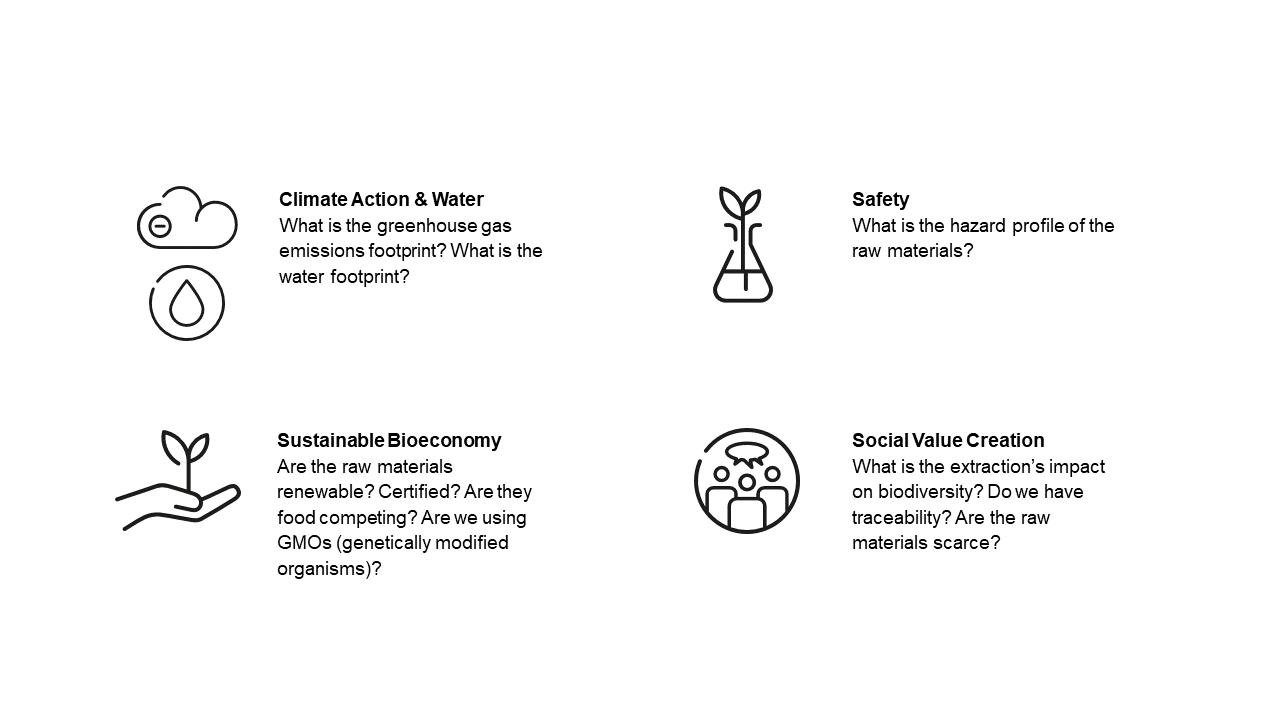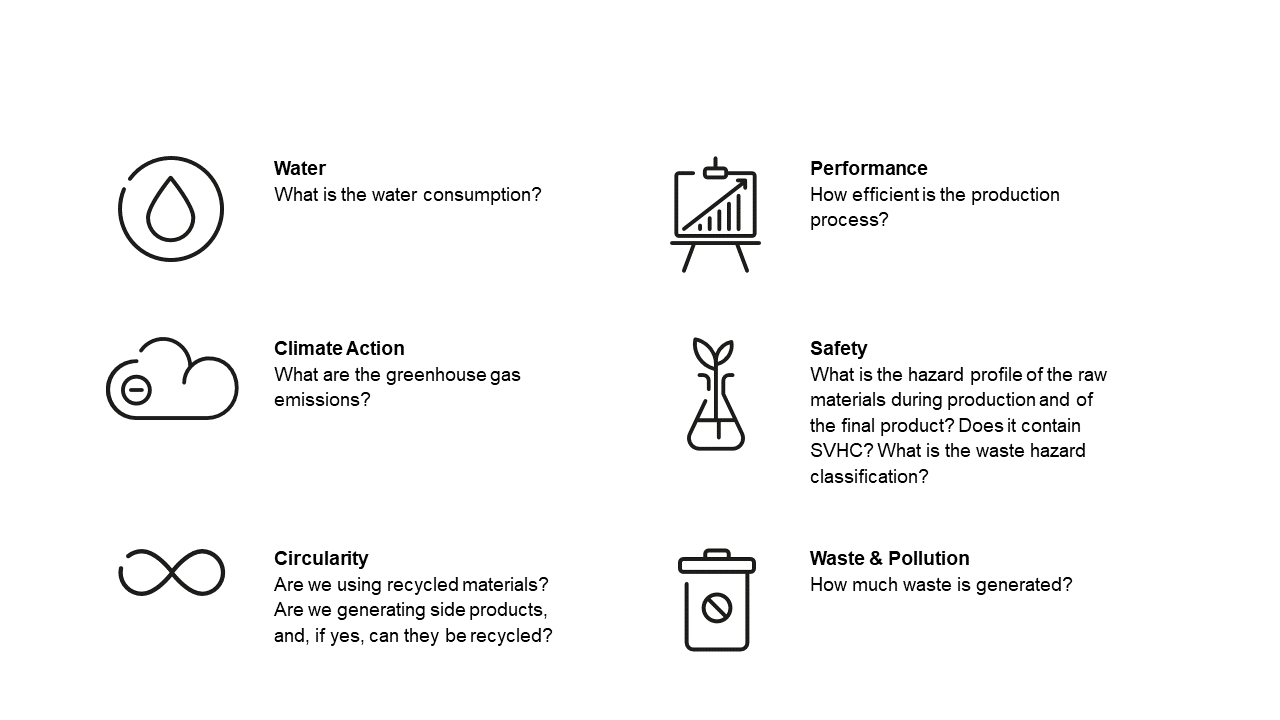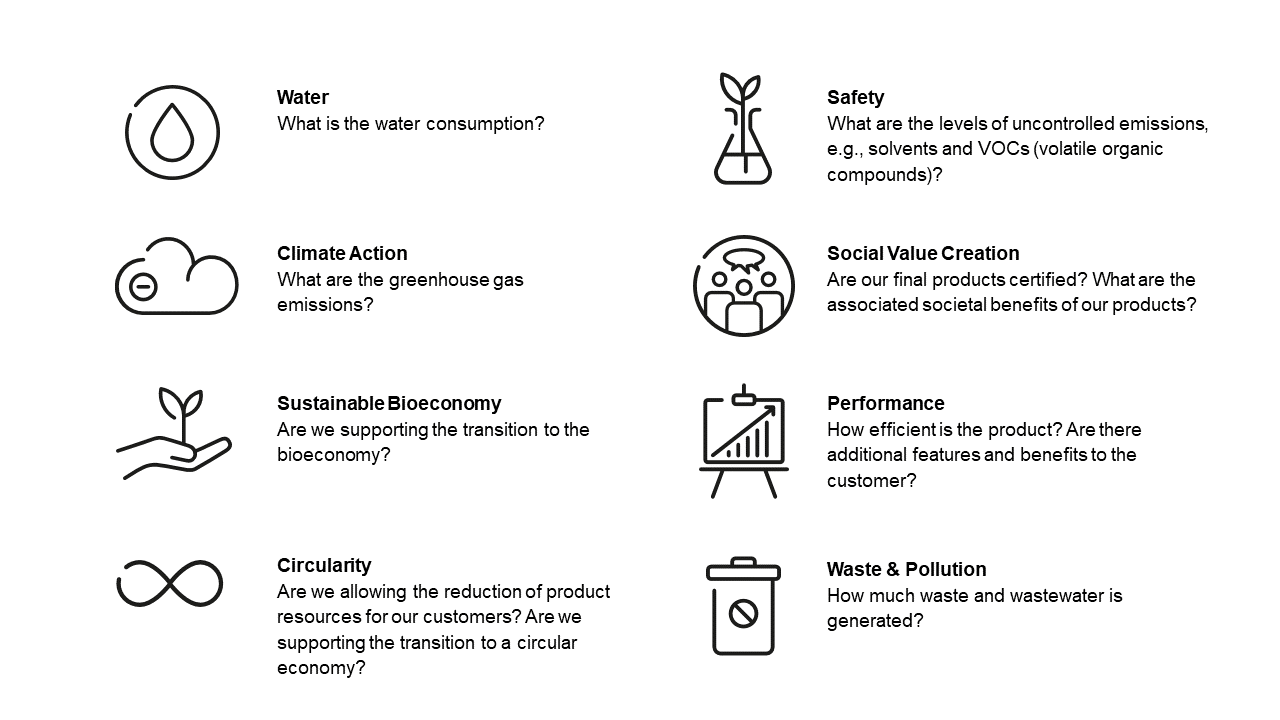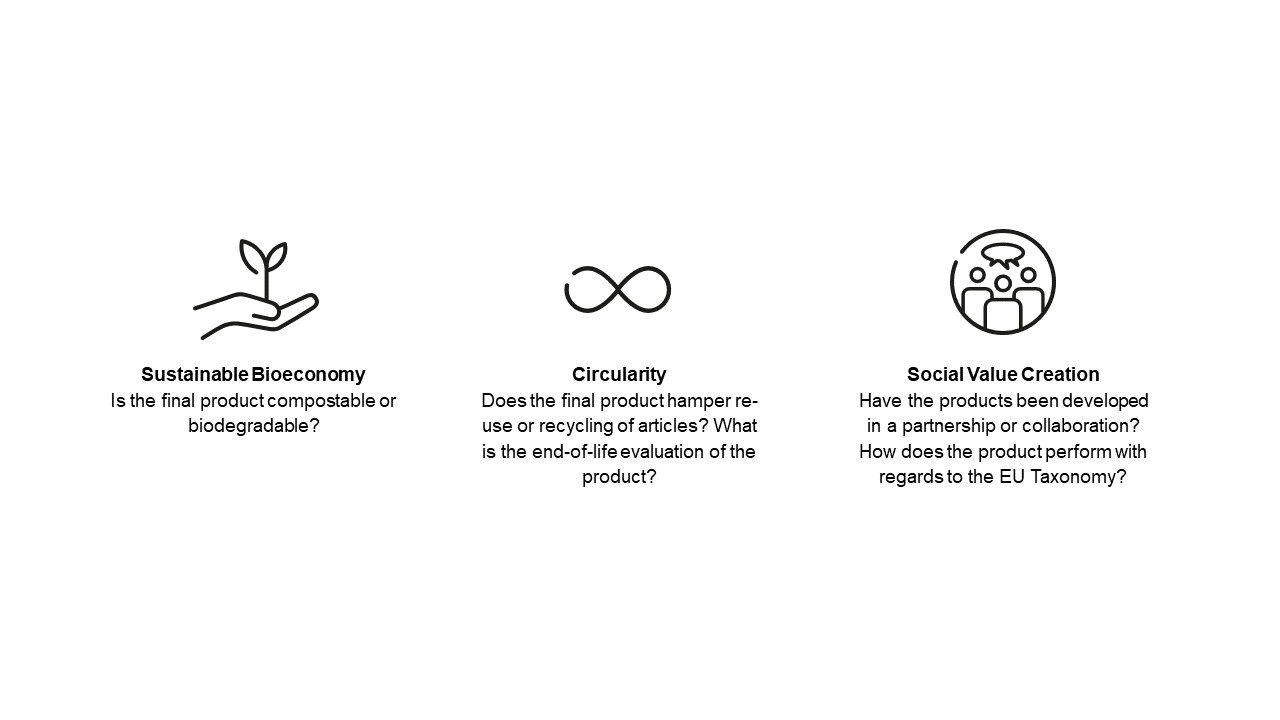Striving for higher sustainability performance
SUSTAINABLE PORTFOLIO MANAGEMENT
PVP: Portfolio Value Program
Chemicals are everywhere in our daily life and play a fundamental role in most of our activities. Yet population growth, finite resources and evolving global standards of living raise important questions: How will we live in 2030? Which chemicals will meet the needs of our future generations?
At Clariant, we are not only constantly asking these questions, but also searching for answers. We aim to translate the macro picture of our changing sustainability landscape into value creating chemicals. These questions, and the search for answers, inspired us to launch our Portfolio Value Program (PVP) at the end of 2012.
PVP sets the foundations to deliver innovative and competitive solutions, enabling us and our customers to lead the transition to a sustainable world. The PVP system was developed following a thorough analysis of sustainability trends and needs, while also considering inputs and perspectives from external stakeholders. It aligns with the Product Sustainability Assessments (PSA) guidance of the World Business Council for Sustainable Development. Through sustainability screening we also aim to steer our solutions towards contributing to achieving the UN Sustainable Development Goals.
Clariant’s PVP provides the basis on which we substantiate our sustainability performance and continuously drive product portfolio improvements. The system allows us to identify performance benefits, strengthen opportunities for value chain collaboration, engage in dialog with customers and stakeholders, and add value with sustainability and innovation. PVP categorizes our product portfolio into four classifications:
ECOTAIN® SUSTAINABLE TRANSITIONAL NON-SUSTAINABLE Frontrunners of the market segment
which provide substantial contribution
to sustainability across two or more life cycle phasesProducts with a positive sustainability contribution according to Clariant’s PVP guide in one or more criteria Products for which there are sustainability issues actively being addressed Products without potential for sustainability contributions
The PVP screening process is the basis to identify possible EcoTain® products and solutions, assessing them against market standards and for their overall sustainability contribution and impact. Clariant experts carry out the PVP screening process by reviewing each product and solution across its entire life cycle. Offerings that meet our sustainability excellence standards are put forward and confirmed by a corporate review panel.

» Greater chemistry comes only with a deep understanding of products across all life cycle phases. «
Yvonne Zhang, Head of Sustainability Transformation
Anticipating future trends
Clariant was among the chemical industry’s pioneers in introducing sustainability assessments of its portfolio. In anticipation of new trends, regulations, and changing customer needs, in 2022, Clariant fully revised its PVP system and introduced an updated methodology and screening process for portfolio sustainability assessments. This new version – PVP 2.0 – fully reflects Clariant’s sustainability focus themes as well as upcoming regulations as part of European Green Deal.
PVP 2.0 represents an important milestone on the way to realizing our vision to enable a sustainable future in every way we can. The program’s holistic approach provides a significant driver for sustainability progress, not only within the company but also across the value chain and ultimately the chemicals sector.
PVP process in a nutshell
PVP is integrated at every step of Clariant’s idea-to-market process. We aim for all innovation projects to be subjected to an early-stage sustainability evaluation considering sustainability criteria. This enables Clariant to identify the sustainability impact and benefits of a project and to identify outstanding performance ahead of commercialization.
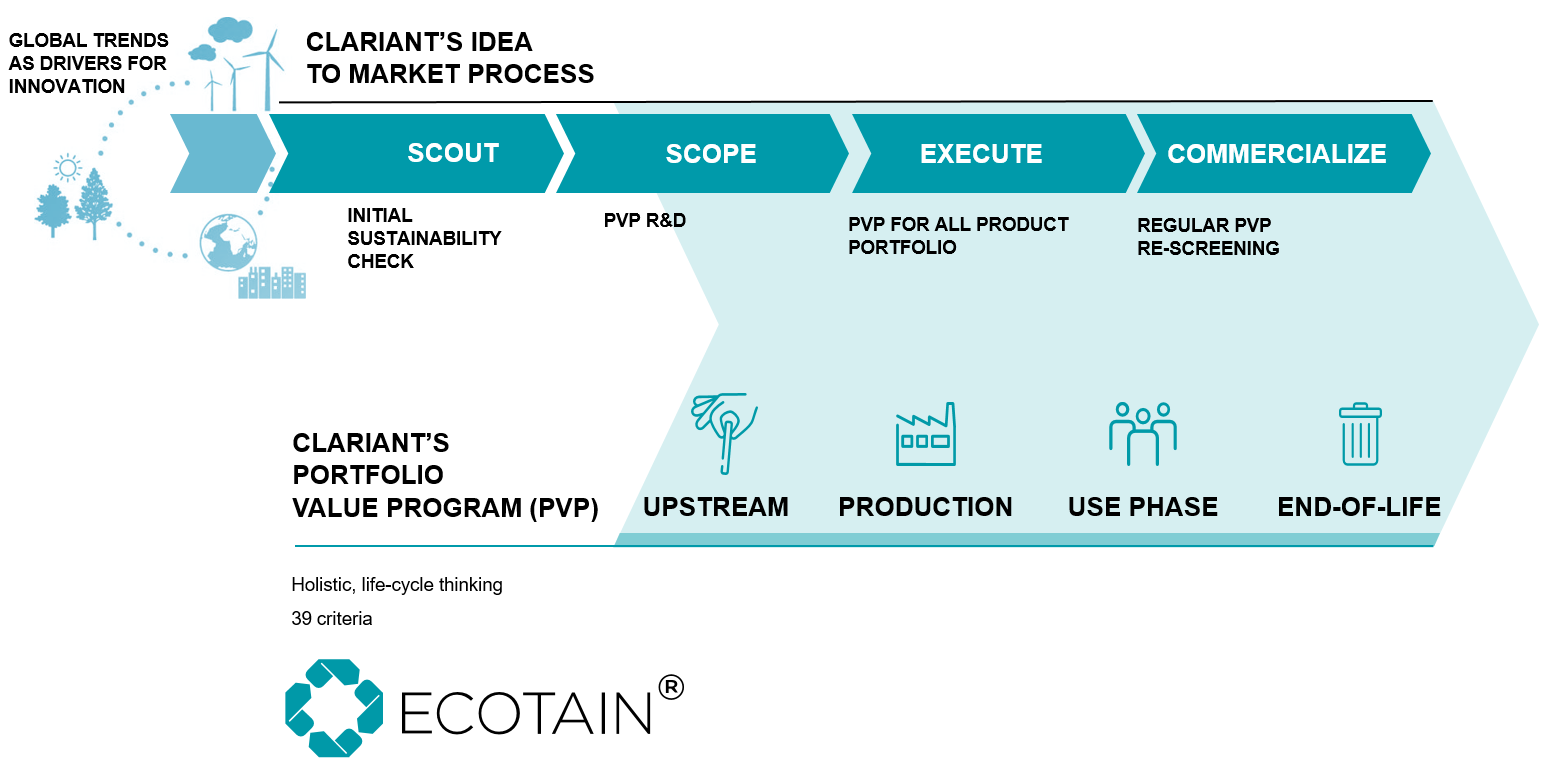
Clariant experts carry out the PVP screening process by reviewing each product and solution in a personalized digital tool. The assessments are conducted by small multidisciplinary cross-functional teams, including both Corporate Functions (e.g., Environment, Safety & Health Affairs, Global Product Stewardship) and Business Units (e.g., Marketing & Sales, Research & Development/R&D). PVP considers a set of 39 criteria which reflect the most material topics for People, Planet and Performance across all life cycle phases (upstream, production, use phase and end-of-life).
Criteria per life cycle phase

Want to know more? Download our Portfolio Value Program guide.
With the launch of our updated methodology , Clariant makes available a guide so that all our stakeholders can understand our approach, being a credible and trustworthy partner. In it, you will better understand how Clariant screens its portfolio in the most important sustainability topics.

